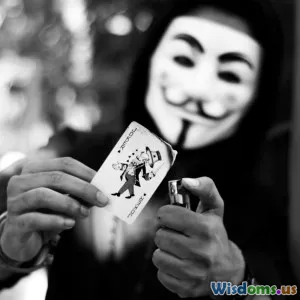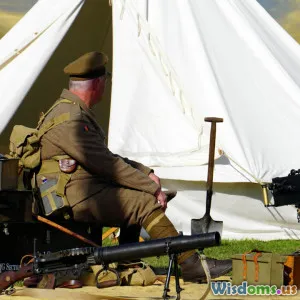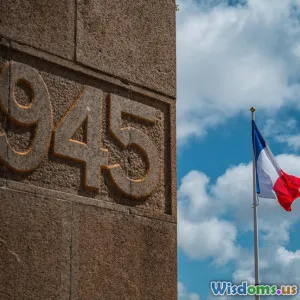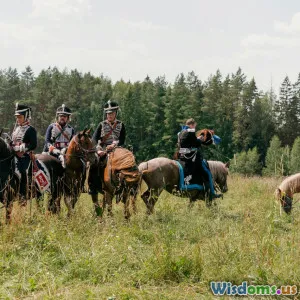
Secrets Behind the Closed Doors
7 min read Dive into the enigmatic world of secret societies and organizations, revealing hidden truths and longstanding mysteries. (0 Reviews)
Secrets Behind the Closed Doors: The Hidden World of Secret Societies and Organizations
Introduction
From whispered legends to popular fiction, secret societies and enigmatic organizations have long captivated human imagination. But behind the mystique lies a fascinating history of groups operating in the shadows—often influencing politics, culture, and society in ways that remain largely unseen by the public eye. What are these groups? How do they operate? And why do they hold so much power behind the seemingly impenetrable walls?
This article uncovers the real-life secrets behind the closed doors of such societies, offering insight into their origins, inner workings, and enduring influence.
The Origins and Purpose of Secret Societies
Secret societies are not a modern invention; their roots trace back to antiquity. Philosophical mystery cults like the Eleusinian Mysteries in ancient Greece or the Vestal Virgins of Rome carried esoteric knowledge accessible only to initiates. Their purpose ranged from spiritual enlightenment to political maneuvering.
In more recent history, organizations such as the Freemasons, founded in the late 16th to early 17th century, combined social networking with symbolism and ritual. Their members included influential figures such as George Washington and Benjamin Franklin, who used these bonds to shape emerging national identities and political institutions.
Case Study: The Freemasons
Despite popular myths of world domination, Freemasonry essentially functioned as a fraternity promoting fraternity, morality, and charitable work. Its secret rituals served to reinforce the group’s cohesion, and yet, conspiracies have flourished over claims of clandestine manipulation.
The Mechanics of Secrecy: Rituals, Symbols, and Initiations
secrecy isn't just about withholding information; it involves a complex system designed to cultivate loyalty and trust inside the group.
Rituals
Secret rituals are often critiqued and embellished through folklore, but in reality, these ceremonies serve psychological purposes: they mark transitions, reinforce hierarchies, and build an exclusive identity. For example, the Skull and Bones society at Yale University incorporates symbolic practices that bond members and cultivate networks of influence in professional and political circles.
Symbols
Symbols transcend language and culture, creating a subtle but powerful communication among insiders. The owl of the Bohemian Club, the compass and square of Freemasonry, or the pyramid on the US dollar bill are examples often cited, each with a history and meaning often obscured to outsiders.
Initiation
Initiations are gateways that test trustworthiness and commitment. Admission into these circles is often selective and rigorous, ensuring a tightly-knit inner circle. Moreover, secrecy itself is a mechanism of power—once privy to exclusive knowledge, members gain a sense of entitlement and authority.
Influence and Power: Fact vs. Fiction
Political Clout
There is substantial evidence that members of secret societies have wielded influence in shaping policies and leadership—whether through lobbying, funding, or informal networks rather than direct orders.
For instance, several US presidents have been Freemasons, suggesting that membership opens doors to influential networks that subtly shape governance.
Cultural Impact
Beyond politics, secret organizations have influenced art, literature, and media. The surrealist movement and certain aspects of modern architecture have incorporated esoteric symbols inspired by secret societies, embedding cryptic motifs into mainstream culture.
The Darker Side
While many secret societies promote philanthropy and ethical values, allegations of corruption, abuse of power, and conspiratorial goals persist. The notorious Illuminati, a Bavarian secret society founded in 1776, became the subject of myths suggesting attempts at global domination—although historians regard these as largely exaggerated.
Modern-Day Secret Societies and Transparency Challenges
In the digital age, the concept of absolute secrecy faces unprecedented challenges. Social media, leaks, and investigative journalism have peeled back layers of traditional organizations.
The Bilderberg Group
Founded in 1954, the Bilderberg Group comprises political leaders, industry moguls, and academics who meet annually in private. This exclusivity fuels speculation about their role in global governance, yet the group insists the meetings foster informal dialogue without binding agreements.
Cryptic Societies in Tech
New secretive organizations have emerged within the tech world as closed think tanks or elite innovation hubs, such as secretive AI research groups or venture capitalist syndicates. Their goals often include staying ahead in competitive, rapidly evolving sectors.
Why the Mystique Persists
Secrets generate power by creating an “us versus them” dynamic—exclusivity breeds intrigue and allure. This, coupled with genuine clandestine dealings and the human penchant for conspiracy, fascinates countless people. Moreover, secrecy serves protective and strategic purposes within these groups, preserving their knowledge and networks from misuse or infiltration.
Conclusion
The secrets behind the closed doors of organizations and secret societies are a blend of verified history, symbolic tradition, and persistent myth. While many such groups undeniably influence society’s trajectories, much of their power lies in perception and exclusivity.
Understanding these bodies requires discerning fact from fiction, recognizing their role in social structures, and appreciating how secrecy shapes human collaboration.
As you reflect on these hidden worlds, remember that transparency and accountability are vital in ensuring that power withheld behind closed doors does not betray the very societies they claim to serve.
“There is no such thing as a coincidence, only the illusion of it.” - Mason Weaver
Whether you remain skeptical or curious, the secrets behind the closed doors offer a fascinating glimpse into humanity's complex social fabric.
Rate the Post
User Reviews
Popular Posts





















